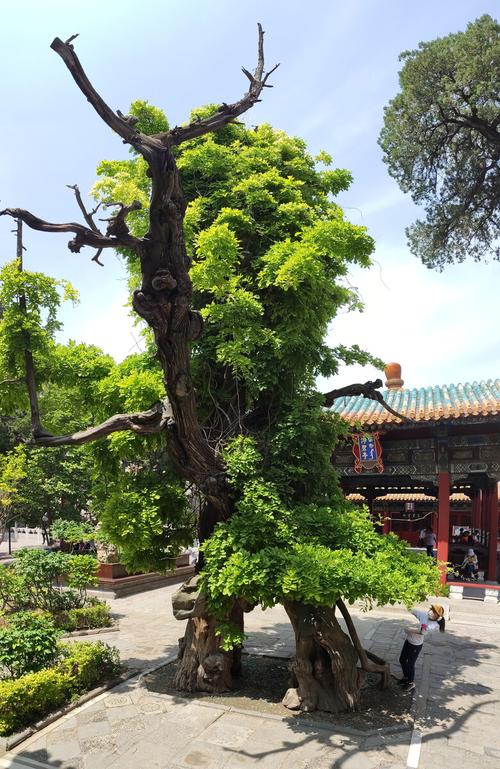
Ancient Trees in the Imperial Garden
A Glimpse into History Through Nature's Giants
The Imperial Garden, a place of serene beauty and historical significance, is home to an impressive collection of ancient trees. These arboreal wonders, silent witnesses to centuries of dynastic rise and fall, stand as living testaments to the enduring power of nature. Their gnarled branches and weathered trunks whisper tales of emperors and empresses, of courtly intrigue and moments of quiet contemplation.
This article delves into the diverse variety of ancient tree species found within the Imperial Garden, exploring their unique characteristics, cultural significance, and the stories they hold within their rings.
Majestic Conifers: Symbols of Longevity and Strength
Towering above the meticulously landscaped gardens, ancient conifers command attention with their imposing size and evergreen foliage.
- Chinese Arborvitae (Platycladus orientalis): Revered for their longevity, these majestic trees symbolize enduring strength and resilience in Chinese culture. Their scale-like leaves and aromatic wood have made them a popular choice for both ornamental and medicinal purposes throughout history.
- Chinese Juniper (Juniperus chinensis): Known for their resilience and adaptability, Chinese Junipers thrive in the Imperial Garden's diverse microclimates. Their twisted trunks and fragrant, scale-like foliage contribute to the garden's air of ancient wisdom and tranquility.
Graceful Deciduous Trees: A Tapestry of Color and Change
While the conifers offer evergreen grandeur, the deciduous trees of the Imperial Garden contribute a vibrant tapestry of color that shifts with the seasons.
- Scholar Tree (Sophora japonica): Also known as the Pagoda Tree, this elegant species graces the garden with its delicate, fern-like leaves and fragrant, creamy-white flowers in late summer. Its association with scholarship and wisdom makes it a fitting inhabitant of this historic setting.
- Ginkgo (Ginkgo biloba): Considered a living fossil, the Ginkgo tree has graced the earth for millions of years. Its unique, fan-shaped leaves turn a brilliant gold in autumn, creating a breathtaking spectacle within the Imperial Garden. These trees are revered for their longevity and resilience, symbolizing endurance and a connection to the distant past.
- Chinese Maple (Acer buergerianum): Prized for their exquisite autumn foliage, Chinese Maples paint the Imperial Garden in shades of crimson, gold, and purple. Their graceful form and delicate leaves add a touch of elegance to the landscape.
Significance and Preservation: Guardians of History and Heritage
The ancient trees of the Imperial Garden are more than just botanical wonders; they are living links to the past, silent witnesses to the ebb and flow of history. Their presence evokes a sense of awe and wonder, reminding us of the enduring power of nature and the importance of preserving these treasures for generations to come.
Preservation efforts within the Imperial Garden focus on maintaining a delicate balance between preserving the historical integrity of the landscape and ensuring the health and longevity of these ancient trees. This includes careful monitoring of soil conditions, providing adequate water and nutrients, and implementing measures to protect the trees from pests, diseases, and environmental stressors.
FAQs:
- Q: What is the oldest tree in the Imperial Garden?
- A: While the exact age of many trees is difficult to determine, some of the ancient Ginkgos and Arborvitae are estimated to be several centuries old.
- Q: Are there guided tours that focus on the ancient trees of the Imperial Garden?
- A: Yes, many guided tours of the Imperial Garden highlight the significance of the ancient trees, offering insights into their history, cultural importance, and botanical characteristics.
- Q: What measures are being taken to protect the ancient trees from climate change?
- A: The Imperial Garden employs a team of horticultural experts who closely monitor the trees' health and implement strategies to mitigate the effects of climate change, such as providing shade during extreme heat and adjusting irrigation practices.